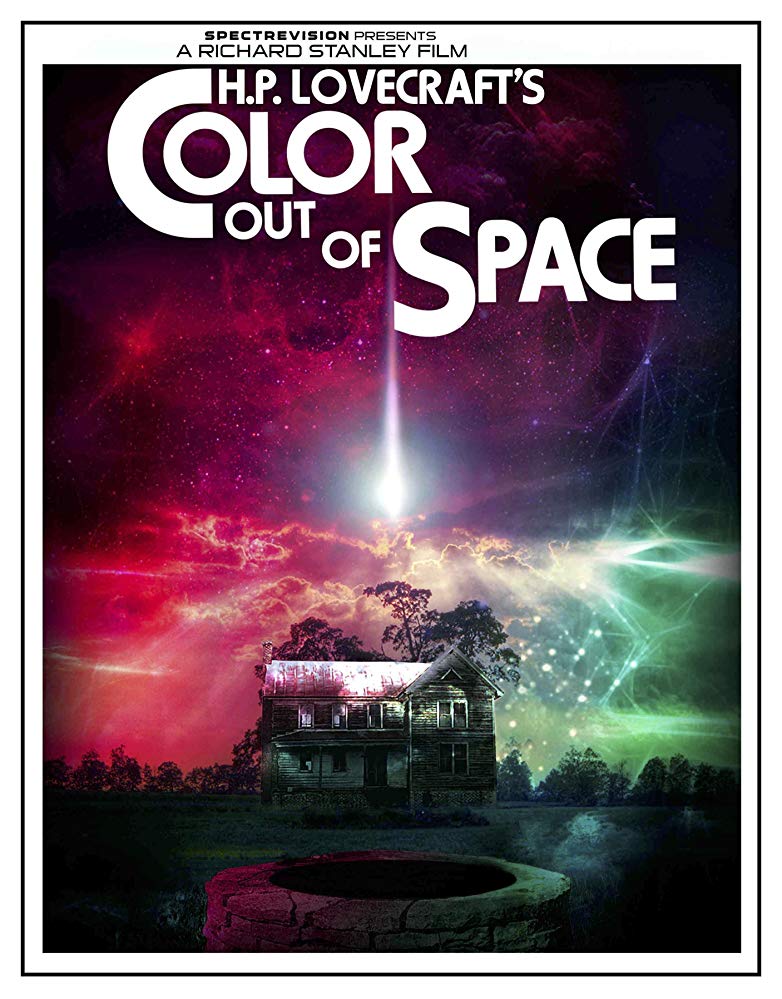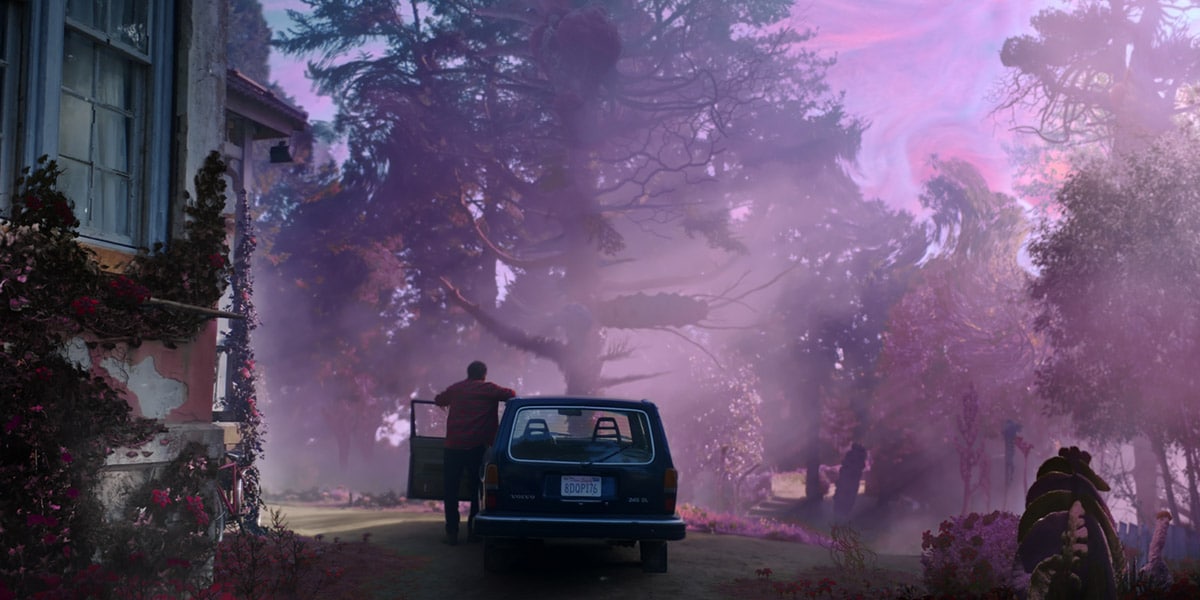
It’s a sad fact that director Richard Stanley is as well known for not making films as he is for making them; since the debacle surrounding The Island of Doctor Moreau in the mid nineties Stanley hasn’t made a creative feature-length film, and given the quality of his earlier projects such as Hardware, this can only be our loss. Still, he’s apparently decided to ‘go big or go home’ with his latest offering – an adaptation of an HP Lovecraft short story, brought bang up to date and crafted into something both incredibly lurid and incredibly dismal. I don’t think you make the attempt to adapt Lovecraft without having a determination to push yourself or, to an extent, having something to prove. Color Out of Space may have its flaws, but no one can argue with its sense of purpose. It’s a graphic, artistic assault on the family; almost a home invasion film as it’s imagined here, it spins something very interesting and unsettling out of the extra-dimensional force which lands on this particular corner of the world.
The film starts in rural New England: the Gardner family have moved there to escape city life, and although they need to keep on-grid to an extent make a living, they seem to be enjoying it there. Daughter Lavinia (Madeleine Arthur) is getting into the spirit of Gaia in the woods, enacting versions of magic rituals as a means of protecting her family; her brothers Ben and Jack (Brendan Meyer and Julian Hilliard) seem fairly well-adapted and parents Theresa and Nathan (Joely Richardson and Nicholas Cage) are in the throes of re-assembling their marriage after Theresa’s fight with breast cancer, even if Nathan seems to have an unorthodox idea for his new career in farming (if you’ve never seen an alpaca in a horror film, then get ready). We get just enough of a sense of this happy, if eccentric family before all hell lets loose; a meteorite lands on their property overnight, causing a fair amount of obvious damage. However, the impact of this event goes far beyond the obvious; whatever the meteorite has brought, it soon has an impact on the landscape around the farmstead. The local authorities arrive and, finding that the water has been contaminated, they advise (too late) that the family avoid drinking it. New, hitherto-unseen flora begin to bloom around the area; the well on the property seems to be a particular focus for whatever malign (or at least indifferent) force has just arrived; crops come in sooner than expected, but they’re all putrefying. Technology begins to fail; mobile phones do their thing of capitulating the moment they’re genuinely needed. The family are more than a little perturbed.
It’s perhaps not such a leap to suppose that whatever can impact upon the local flora and fauna in this way can have an equally disruptive effect on the people who live there, and the ways in which these changes are shown are by turns very creative and gruelling to watch. At first, quite subtle shifts in mood and space/time perception give way to more physically harmful phenomena. These go from close-up minutiae (not for the squeamish) to something approaching body horror as the film approaches its end. I said the film was ambitious; it encompasses everything from magical/extraterrestrial phenomena, all in glorious technicolour, to grotesque practical effects – the one balancing the other, though without letting up on the overall sense of pressure. Watching this fairly relentless assault may not be for everyone, as there is little in the way of redemption here, and the film is escalatingly nasty for a film with such a magnificent colour palette.

Perhaps the main sticking point for many genre film fans will be the range of performances on display here, though, and how you feel about Nicolas Cage in particular in his role as Nathan Gardner will depend on your overall tolerance for his style. Here, he seems to drawl his way through a lot of his earlier scenes; these actually make for harder viewing than the inevitable ‘full Cage’ scenes, as to be fair, when these occur, they’re for good reason. Stanley apparently had to cut some of Cage’s wilder improvs, so we can only wonder what that would have been like. Against the other performances, Cage can seem a little jarring; Joely Richardson in particular has a very different manner in front of the camera, but perhaps the main danger of casting Cage is that many viewers don’t seem able to see past his mannerisms at all – some people laugh if he draws breath – so it runs the risk of taking people out of the film altogether. Of course, for just as many viewers, this is part of the appeal and can only contribute to the overall sense of detachment from reality. Personally, I preferred to look past Cage, for fear of getting absorbed by one aspect of the film only.
Still, overall, the film is an engaging piece of cosmic horror, with some visually bold, effective plays on the ideas of space, time, bodily integrity and (of course, being a Lovecraft adaptation) the notion of sanity. It looks great, with an almost painterly eye in places. As entertainment it’s largely successful, and as a return to the big screen, it’s evidence of ambition realised. I sincerely hope Richard Stanley can build and build on this, as it’s clear he has much to offer and he certainly needn’t languish for another twenty-odd years.
Color Out of Space screened as part of the Mayhem Film Festival (UK) in October 2019.
